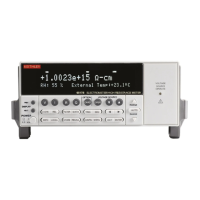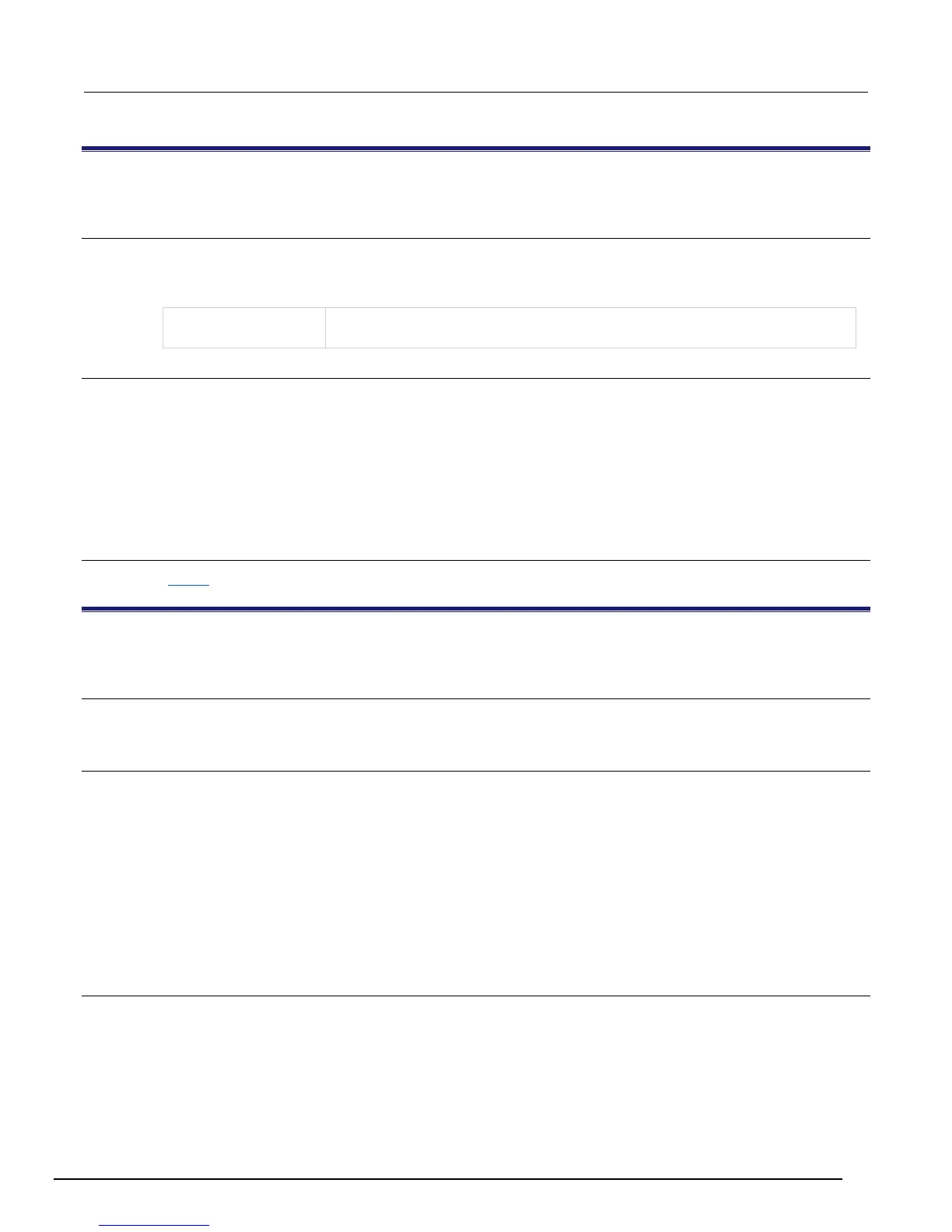Model 6517B Electrometer Reference Manual Section 14: SCPI command reference
6517B-901-01 Rev. C / August 2015 14-41
:STATe <b>
This command controls the LIMIT 1 and LIMIT 2 tests.
Usage
:CALCulate3:LIMit[1]:STATe <b>
:CALCulate3:LIMit2:STATe <b>
:STATe?
<b>
1 or ON: Enable specified limit test
0 or OFF: Disable specified limit test
Details
Description These commands are used to enable or disable LIMIT 1 and LIMIT 2 tests. When
enabled, the test sequence for limits is performed every time the instrument performs a
measurement. Testing is performed in the following sequence: Low Limit 1, High Limit 1, Low Limit 2
and High Limit 2. Any limit test (LIMIT 1 or LIMIT 2) not enabled is simply not performed.
Note that when a limit test (LIMIT 1 or LIMIT 2) is enabled, the digital output port cannot be controlled
from the source Subsystem.
A fail indication for LIMIT 1 or LIMIT 2 is cleared when the respective limit test is disabled.
Also see
:FAIL? (on page 14-41)
:FAIL?
This command reads the LIMIT 1 and LIMIT 2 test results.
Usage
:CALCulate3:LIMit[1]:FAIL?
:CALCulate3:LIMit2:FAIL?
Details
These commands are used to read the results of LIMIT 1 and LIMIT 2 tests:
0 = Limit test passed
1 = Limit test failed
The response message (0 or 1) only tells you if a limit test has passed or failed. It does not tell you
which limit (upper or lower) has failed. To determine which limit has failed, you must read the
transition filter event register.
Reading the results of a limit test does not clear the fail indication of the test. A failure can be cleared
by using a :CLEar command, or by disabling the test (:STATe OFF).
Also see
None

